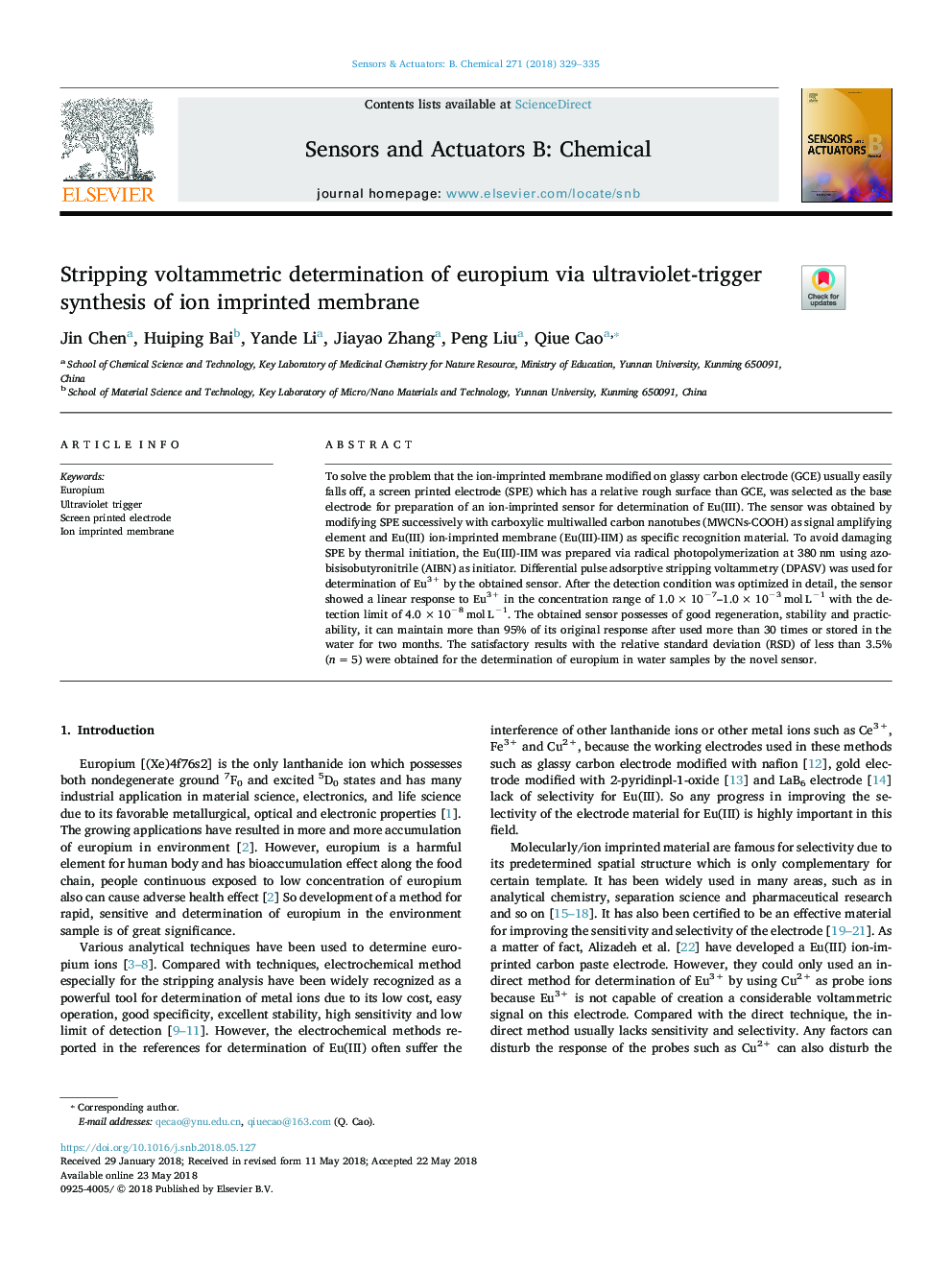| Article ID | Journal | Published Year | Pages | File Type |
|---|---|---|---|---|
| 7138977 | Sensors and Actuators B: Chemical | 2018 | 7 Pages |
Abstract
To solve the problem that the ion-imprinted membrane modified on glassy carbon electrode (GCE) usually easily falls off, a screen printed electrode (SPE) which has a relative rough surface than GCE, was selected as the base electrode for preparation of an ion-imprinted sensor for determination of Eu(III). The sensor was obtained by modifying SPE successively with carboxylic multiwalled carbon nanotubes (MWCNs-COOH) as signal amplifying element and Eu(III) ion-imprinted membrane (Eu(III)-IIM) as specific recognition material. To avoid damaging SPE by thermal initiation, the Eu(III)-IIM was prepared via radical photopolymerization at 380â¯nm using azobisisobutyronitrile (AIBN) as initiator. Differential pulse adsorptive stripping voltammetry (DPASV) was used for determination of Eu3+ by the obtained sensor. After the detection condition was optimized in detail, the sensor showed a linear response to Eu3+ in the concentration range of 1.0â¯Ãâ¯10â7-1.0â¯Ãâ¯10â3â¯molâ¯Lâ1 with the detection limit of 4.0â¯Ãâ¯10â8â¯molâ¯Lâ1. The obtained sensor possesses of good regeneration, stability and practicability, it can maintain more than 95% of its original response after used more than 30 times or stored in the water for two months. The satisfactory results with the relative standard deviation (RSD) of less than 3.5% (nâ¯=â¯5) were obtained for the determination of europium in water samples by the novel sensor.
Keywords
Related Topics
Physical Sciences and Engineering
Chemistry
Analytical Chemistry
Authors
Jin Chen, Huiping Bai, Yande Li, Jiayao Zhang, Peng Liu, Qiue Cao,
